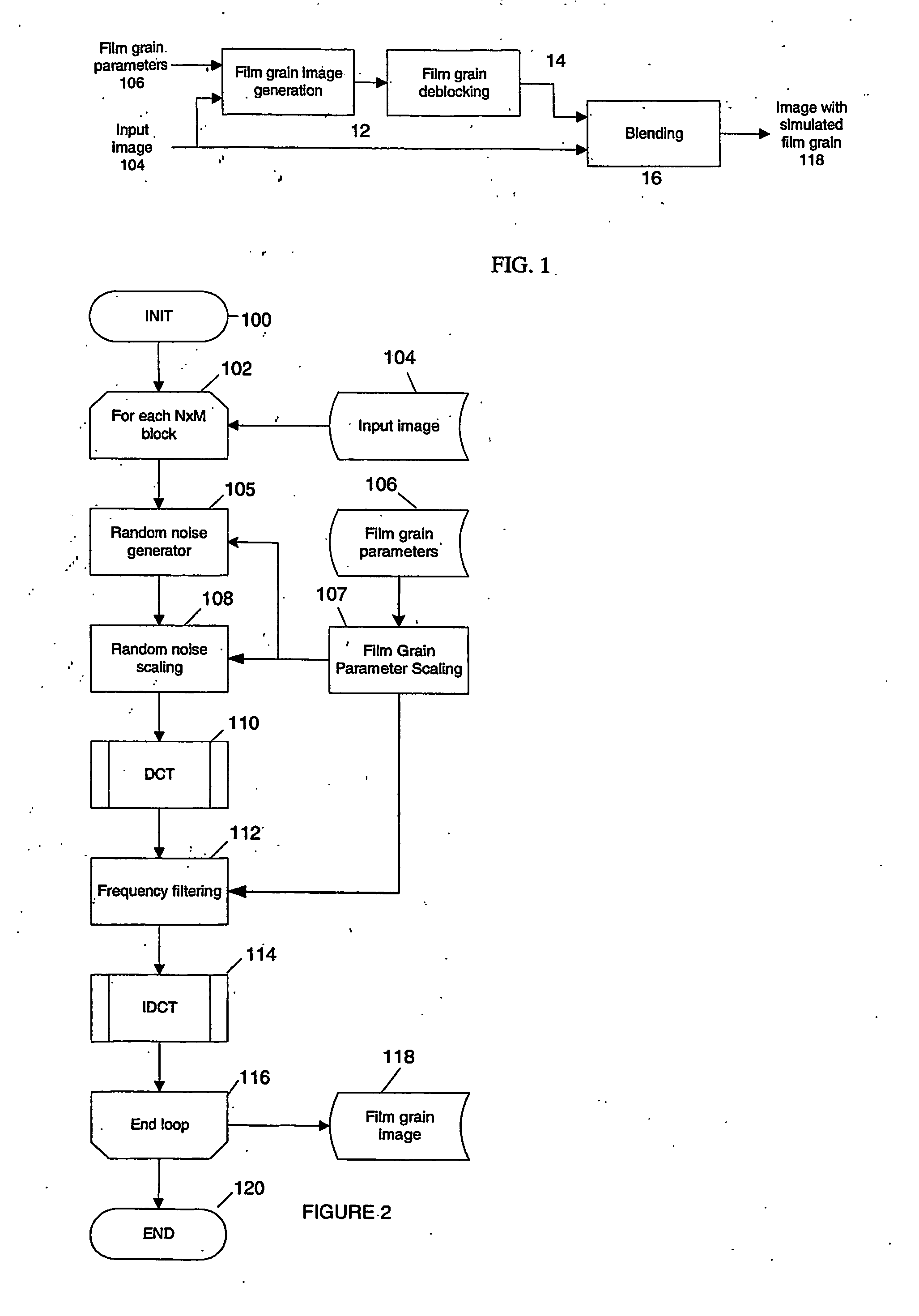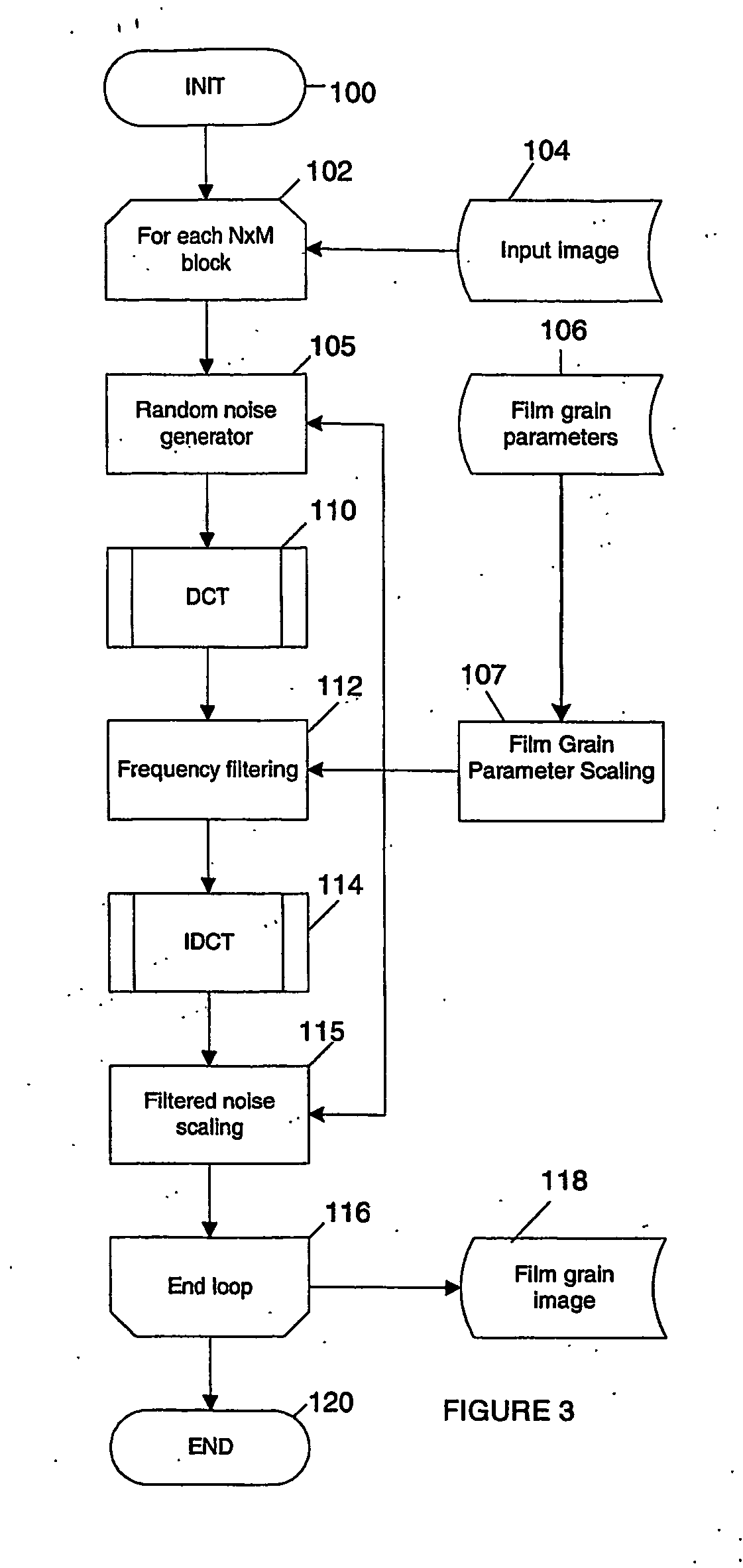Technique for simulating film grain using frequency filtering
a frequency filtering and film grain technology, applied in the field of film grain simulating, can solve the problems of cineon® application not yielding good performance for many high-speed films, film grain simulating application fails to achieve adequate fidelity when images, and motion picture films typically contain image-dependent nois
- Summary
- Abstract
- Description
- Claims
- Application Information
AI Technical Summary
Benefits of technology
Problems solved by technology
Method used
Image
Examples
Embodiment Construction
[0018]FIG. 1 depicts a block schematic diagram of a system 10 for simulating film grain in an image. The system 10 comprises a first block 12 for generating film grain information from both an input image 104, and from at least one film grain parameter embodied in a film grain message, such as SEI message 106. The film grain generator block 12 generates film grain information from such input information using one of the methods of FIGS. 2 and 3 described in greater detail below. The film grain information generated by the film grain generator block 12 undergoes deblocking by a film grain deblocking filter 14 before receipt at a blending block 16. The blending block 16 blends the filtered film grain information with the input image to yield an output image containing film grain.
[0019]FIG. 2 depicts a flow chart illustrating the steps of a method in accordance with a first aspect of the present principles for film grain generation. As described in greater detail below, the method of ...
PUM
 Login to View More
Login to View More Abstract
Description
Claims
Application Information
 Login to View More
Login to View More - R&D
- Intellectual Property
- Life Sciences
- Materials
- Tech Scout
- Unparalleled Data Quality
- Higher Quality Content
- 60% Fewer Hallucinations
Browse by: Latest US Patents, China's latest patents, Technical Efficacy Thesaurus, Application Domain, Technology Topic, Popular Technical Reports.
© 2025 PatSnap. All rights reserved.Legal|Privacy policy|Modern Slavery Act Transparency Statement|Sitemap|About US| Contact US: help@patsnap.com



